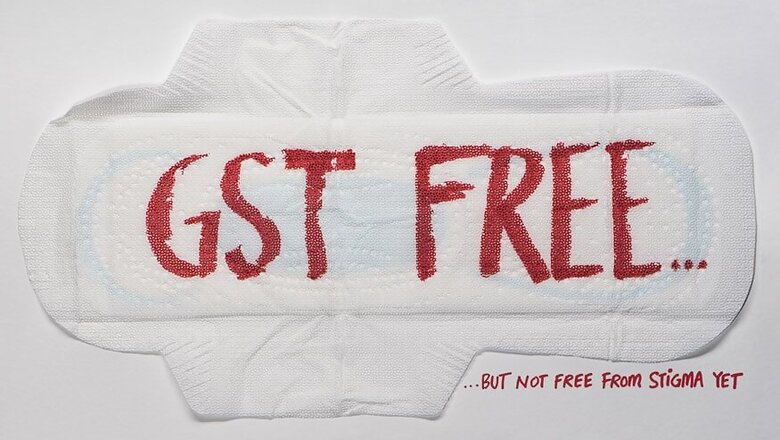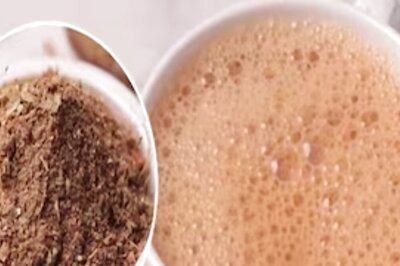
views
Bollywood celebrities, government functionaries and bleeding hearts have hailed the government’s decision to remove GST on sanitary napkins, little realising that this product is unlikely to get significantly cheaper for the consumer despite coming out of the GST net. It could be that these people are unaware of how the GST system works. Or, they may be seeking publicity for a “cause” they allegedly championed for months even though it is clear that any price benefit to the end consumer would, at best, be negligible.
The government, obviously alive to the salutary effects of announcing a tax cut on a feminine hygiene product, is now saying that it will ensure any price reduction is passed on to consumers. This remains to be seen and most manufacturers may pass on only small cuts, if at all, not the entire 12%. Some reports actually suggest that end prices could rise marginally as a consequence of the GST Council’s decision on Saturday to exempt sanitary napkins!
Akshay Kumar, who has been seen as a champion of feminine hygiene after doing the movie ‘Pad Man’ tweeted his pleasure at the government’s move.
https://twitter.com/akshaykumar/status/1020713650515070976
“One of those days when a news brings tears of joy as a cause close to ur heart gets fulfilled. Thank you, #GSTCouncil, for understanding the need for menstrual hygiene & exempting sanitary pads from tax. I'm sure crores of women in our country are silently sending gratitude ur way”
BJP’s Anurag Thakur of course also praised the decision. “A welcome move from @narendramodi ji @PiyushGoyal ji for exempting #SanitaryNapkins from GST. This will ensure menstrual hygiene amongst a large no.of women I had initiated distribution of sanitary napkins in my Parliamentary for 10-19yrs girls that has been taken up by State Govt “
https://twitter.com/ianuragthakur/status/1020675837123649539
To understand why the manufacturers of sanitary napkins are unlikely to offer any significant price relief to consumers, one needs to understand the input and output tax credit systems under GST. Makers of any product are taxed when they buy raw materials and again when they sell the finished product to the consumers. Only, if there is a GST charged for the finished product, the manufacturer is able to get the input tax – the tax levied on buying raw materials – reimbursed. Now that GST on the sanitary napkins has been made zero, the manufacturer would continue to attract input tax, which simply means the manufacturing costs remain the same and therefore the possibility of any significant price relief for the end consumer is remote.
http://pib.nic.in/newsite/PrintRelease.aspx?relid=167293
That the government itself was wary of reducing the GST on sanitary napkins till last year is clear from this press release by the Finance Ministry on July 10 last year. In it, the ministry has explained its decision till then to continue taxing sanitary napkins thus: “As raw materials for manufacture of sanitary napkins attract GST of 18% of 12%, even with 12% GST on sanitary napkins, there in an inversion in the GST structure. Though, within the existing GST law such accumulated ITC (input tax credit) will be refunded, it will have associated financial costs [interest burden] and administrative cost, putting them at a disadvantage vis-à-vis imports, which will also attract 12% IGST on their imports, with no additional financial costs on account of fund blockage and associated administrative cost of refunds.”
It had further said that reducing the GST rate on sanitary napkins to nil, would “result in complete denial of ITC (input tax credit) to domestic manufacturers of sanitary napkins and zero rating imports. This will make domestically manufactured sanitary napkins at a huge disadvantage vis-a-vis imports, which will be zero rated.”
Why the government’s own thinking changed within a year could well be due to intense lobbying by the celebrities and bleeding hearts, who decried government’s move to “tax” menstruation while seeking more affordable feminine hygiene methods.
Now that sanitary napkins are out of GST purview, these same activists need to ensure that not only are these essential items made widely available, girls are educated about the criticality of using safe hygiene methods.
Government’s own data show that not even one in two women aged between 15-24 use a sanitary napkin.
http://164.100.47.5/qsearch/QResult.aspx
And the National Family Health Survey 4 shows that two in three women in that age group still use a cloth for menstrual purposes.
http://rchiips.org/NFHS/NFHS-4Reports/India.pdf
The Ministry of Health and Family Welfare runs a scheme under which there is provision of providing sanitary napkins to rural adolescent girls at a rupee per napkin but central funds that states get for such schemes typically remain under-spent. The bottomline is that neither the GST decision nor schemes run by the Centre would lead to any dramatic increase in use of sanitary napkins by large swathes of Indian women. It needs sustained education in India’s hinterland about the critical need for using menstrual hygiene products. For this to happen, the current social taboos around the subject need to be lifted.


















Comments
0 comment